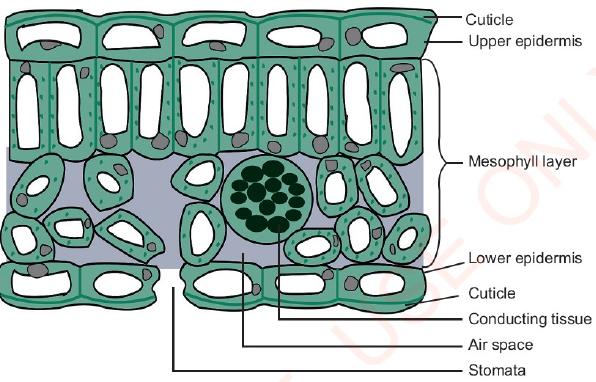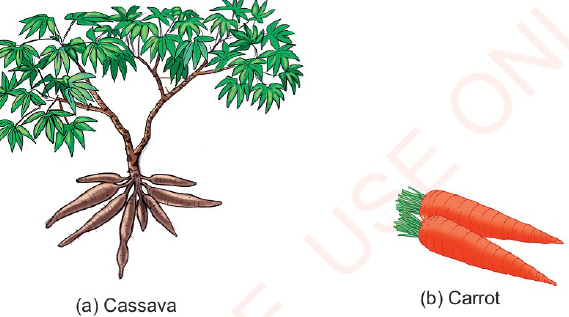Chapter 02 : Photosynthesis
Introduction
In Standard Four, you learnt about the digestive system in human beings and proper eating habits. In this chapter, you will leam about how plants make their own food using carbon dioxide, water and energy from the sun. Unlike animals, plants can make their own food through the photosynthesis process. Photosynthesis is an important process not only in plants but also in animals. This is because the oxygen that animals breathe and the food that they eat is the result of this process.
The plant leaf
The leaf is one of the three main parts of a plant. It is the part where photosynthesis commonly takes place. Leaves and the stem form the shoot of a plant. Apart from facilitating photosynthesis, a leaf also contains small pores on its lower and upper side for gaseous exchange between the atmosphere and the plant. The pores are called stomata. It also facilitates transpiration.
Activity 1:
Examining the outer parts of a leaf
Materials:
White tiles and leaves from different plants
Procedure
1. Collect leaves from different plants.
2. Take one leaf and place it on a white tile.
3. Observe different parts of the leaf.
4. Draw a diagram to show different parts of the leaf observed in (3) above.
5. Repeat steps 2 and 3 using leaves from other plants. What have you noted?
External parts of a leaf
The main external parts of a leaf are: petiole, lamina or leaf blade, vein, margin, midrib and apex.
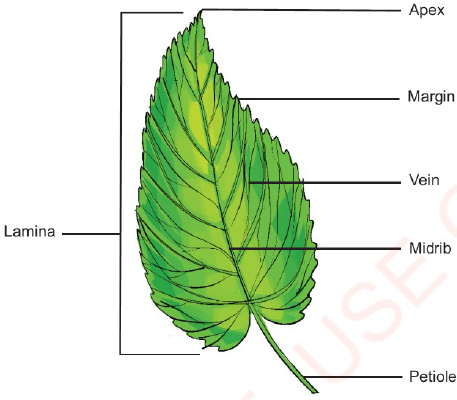 Figure 1: External parts of a leaf |
A petiole is a stalk that connects a leaf to the stem. The petiole, midrib and veins help to transport water and dissolved nutrients from the stem to the leaf. It supports the leaf blade. It also transports food from the leaf to other parts of the plant such as the stem and roots.
A lamina is the soft part of the leaf. It has cells with chloroplasts which contain chlorophyll. The chlorophyll absorbs sunlight energy for photosynthesis. The lamina also has small openings called stomata which can open and close. The stomata is also a site where gaseous exchange occurs. It allows carbon dioxide to enter the plant for photosynthesis and oxygen to go out after photosynthesis. Water in the form of vapour also moves out of a plant through stomata when they are open. Therefore the closing and opening of stomata controls the amount of water in a plant. An apex is the tip of a leaf blade which can be sharp or blunt.
The internal parts of a leaf
If a prepared cross section of a leaf is observed using a microscope it shows parts such as the upper epidermis, the mesophyll layer and the lower epidermis (see Figure 2).
|
Figure 2: Cross-section of a leaf |
The upper and lower epidermis of a leaf
The inner parts of a leaf are protected by the waxy layer called a cuticle. This is found on the lower and upper parts of the leaf. The upper part of the epidermis is called an upper epidermis and the lower one is called a lower epidermis. The cuticle layers on the epidermis are transparent; hence, they allow sunlight to pass through them and enter the inner part of the leaf. The epidermis has small openings called stomata which are scattered all over the surface of a leaf. Normally, stomata are many on the lower epidermis.
The leaf mesophyll
Mesophyll cells are located between the lower and upper epidermis. The leaf mesophyll has three main components, namely air spaces, xylem and phloem vessels. The xylem transports water and mineral salts throughout the leaf. The phloem carries synthesized food after photosynthesis from the leaves to other parts of the plant for storage and use by the plant. Some mesophyll cells have chloroplasts which possess chlorophyll. There are numerous air spaces between mesophyll cells. The air space facilitates the movement of carbon dioxide within the leaf for photosynthesis. It also allows the oxygen produced as a by-product during photosynthesis to move from the leaf to the atmosphere.
Photosynthesis
Plants manufacture their own food in order to survive. The production of food by plants is known as photosynthesis. This process takes place in the mesophyll cells which contain chloroplasts. In order for photosynthesis to occur, water, carbon dioxide and energy in the form of sunlight are required. They are collectively called raw materials. The process of photosynthesis can be summarized using the following equation.
 |
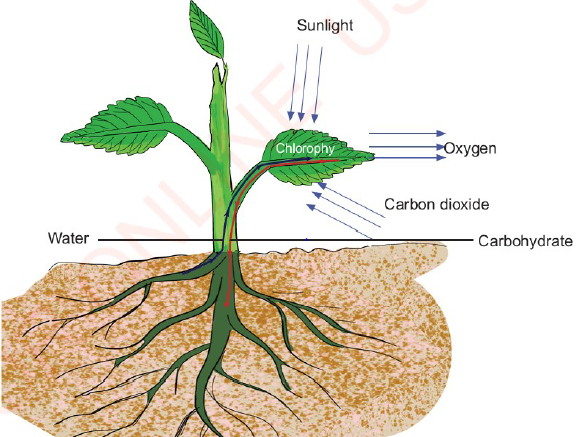 |
Plants obtain the raw materials needed for photosynthesis using roots and leaves. Plant roots have hairs that enable plants to absorb water from the soil. Such water is transported through xylem tissues to the leaves where photosynthesis takes place.
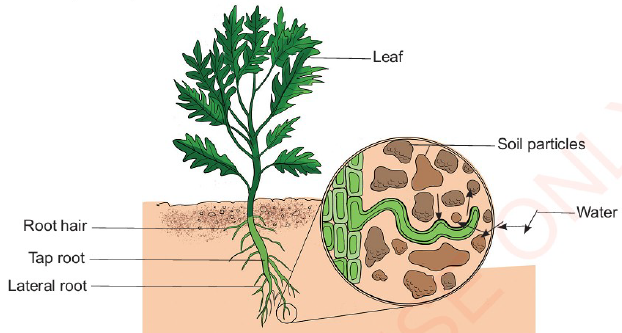 Figure 4: Plant roots absorb water from the soil |
Activity 2: Investigating water absorption in plants
Materials: Three beakers, water, three different colours, three stems of amaranthus and spinach or any similar plants available in your environment
Procedure
1 . Prepare three empty beakers and label them as beaker 1 , beaker 2 and beaker 3.
2. Pour some water mixed with blue, pink and yellow colour in beakers 1, 2 and 3.
3. Take three stems of the spinach and insert one in each of the three beakers containing different kinds of coloured water, as shown in Figure 5.
4. Leave the setup for six hours or more. Observe what has happened.
5. If you do not see any visible change, make a longitudinal or crosssection cut on each of the three stems and observe the inner part of the plants.
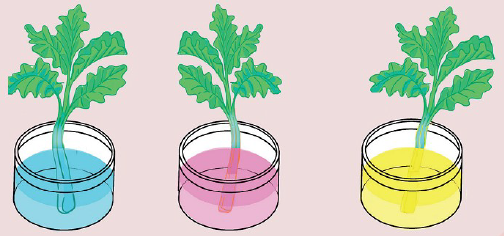 Figure 5 Absorption of water By Plants |
Observation
You will discover that the stem of the spinach has changed its colour by taking on the colour of the fluid in the beakers. This shows that plants absorb water.
How plants obtain carbon dioxide and sunlight Carbon dioxide usually enters the leaf of a plant through its stomata. During the day, the stomata open to allow carbon dioxide to enter the leaf but they close at night.
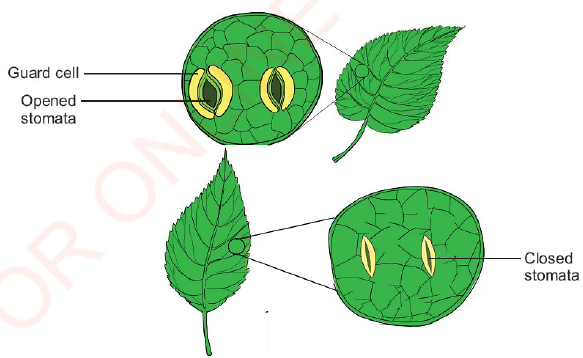 Figure 6 Opening and closing of stomata |
Leaves have chloroplasts which have green pigments called chlorophyll. Chlorophyll absorbs energy from the sun in the form of light. This energy is used during photosynthesis.
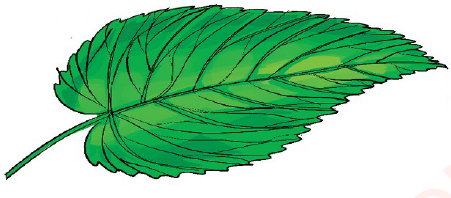 Figure 7 The green leaf |
Exercise
Answer the following questions.
1 . Which of the following are the raw materials that plants use when making their own food?
(a) Water, sunlight energy and cells
(b) Sunlight energy, epidermis, carbon dioxide and water
(c) Chlorophyll, water, cells and carbon dioxide
(d) Carbon dioxide, water, chlorophyll and sunlight energy
2. The process by which a plant produces its own food is known as
3. In which part of the leaf are carbohydrates produced?
4. State the function of the following parts of the leaf:
(i) petiole (ii) midrib (iii) vein
Food storage in plants
After the photosynthesis process is completed, the food that has been produced is transported through conducting tissues called phloem to other parts of plants. Synthesized food is usually stored in roots, stems, leaves and seeds. In cassava, carrot and sweet potato plants, food is stored in roots. In other crops such as maize, wheat and beans, it is stored in seeds. Other crops like sugarcane, yams and ginger store their food in the stem.
(a) Cassava (b) Carrot
|
Figure 8: Plants that store food in roots |
Importance of photosynthesis
1 . Through photosynthesis, plants produce their own food. The food produced is also eaten by other living organisms, especially animals. For example, the food stored in cassava, sweet potatoes, bananas and beans is the result of photosynthesis. Without photosynthesis, living organisms will not survive.
2. Plants produce food for their own growth.
3. Photosynthesis is a natural way of returning oxygen to the atmosphere. Oxygen is very important to all living organisms.
4. Photosynthesis also helps to reduce the amount of carbon dioxide in the atmosphere. Therefore, photosynthesis helps to maintain a good balance of oxygen and carbon dioxide in the atmosphere.
Exercise
Answer the following questions.
Section A: Fill in the blanks with the correct answer.
1 . The small openings found on the lower and upper side of a leaf are known as
2. The part of a leaf which absorbs sunlight energy is called
3. The products of photosynthesis are and
Section B: Answer the following questions.
4. Explain the meaning of photosynthesis.
5. Mention the basic raw materials used in photosynthesis.
6. Why do stomata open during the daytime?
7. Write the equation that represents the process of photosynthesis.
8. Explain the importance of photosynthesis to living organisms.
9. List three plants that store food in their stems.
Vocabulary
Chlorophyll a green pigment found in leaf mesophyll and in stems. It is responsible for absorbing sunlight energy.
Chloroplast the part of a leaf that contains chlorophyll
Epidermis an outer layer of cells in plant leaves
Midrib the largest vein in a leaf. It carries food from the leaf and supplies water and mineral salts to the leaf.
Phloem a vessel responsible for transporting food from the leaves to different parts of a plant for use or storage
Stomata small openings found on leaf epidemis
Vein a small vessel in the leaf of a plant responsible for transporting water nutrients and synthesized food
Xylem a fine vessel found in plants which is responsible for transporting water and nutrients from the soil to different parts of a plant through roots
www.learninghubtz.co.tz
Hub App
 For Call,Sms&WhatsApp: 255769929722 / 255754805256
For Call,Sms&WhatsApp: 255769929722 / 255754805256
 For Call,Sms&WhatsApp: 255769929722 / 255754805256
For Call,Sms&WhatsApp: 255769929722 / 255754805256
WHATSAPP US NOW FOR ANY QUERY
App Ya Learning Hub Tanzania
